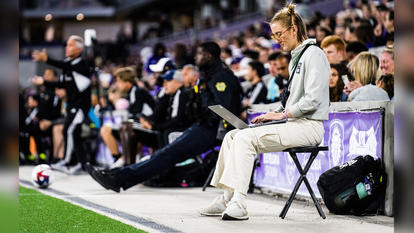On the 50th Anniversary of Stonewall, Wellesley Professor Discusses Its Legacy and Impact

On June 28, 1969, New York City police raided the Stonewall Inn, a bar in Manhattan’s Greenwich Village and a safe haven for the LGBTQ community. For six straight days, the LGBTQ community fought back, holding a series of protests in front of the bar to demonstrate for their rights. This act of resistance has come to be seen as the spark of the gay rights movement.
Octavio González, assistant professor of English at Wellesley, whose focus includes queer literary studies, representations of HIV/AIDS, transatlantic modernism, and the 20th-century novel, discusses Stonewall and its evolving legacy and cultural impact.
Q: Fifty years after Stonewall, how far has the LGBTQ rights movement come? How do you think the future of the movement will look?
Octavio González: I think there is consensus regarding the progress made, and also the inevitable backlash. Look at the Trump administration’s revocation of the transgender community’s right to serve in the armed forces; see the “bathroom bills” and “freedom of conscience” legislation making their way across statehouses, which would deny the queer community equal rights to public accommodations through a “religious freedom” exemption, or through the bigotry of essentialist gender policing. Statistics also show that LGBT people, especially trans women of color, bear the brunt of social violence and oppression, including homicide, homelessness, and poverty. So, there is a great deal to celebrate, in the equal-rights gains the LGBTQ community has achieved, but we are far from there yet.
Q: What relationship does the international LGBTQ community have with the Stonewall riots and their legacy?
González: They’re calling this weekend’s NYC Pride “world pride,” in celebration of Stonewall’s 50th anniversary. Stonewall of course is a New York gay bar, but remember that commemorations of the rebellion happened across the United States, not just in NYC. Similarly, the idea of “world pride” indicates the global aspirations of sexual and gender minorities. There are good and bad complications about the “global gay” phenomenon, but, as with the debate over marriage equality and military service, there is a diversity of viewpoints about LGBTQ rights becoming a global movement.
As a Dominican American, the U.S.-centered Stonewall narrative seems incomplete to me. I have no problem with “exporting” LGBTQ rights, but only if we Americans acknowledge the presence of other voices in the global marketplace of ideas who have their own histories of fighting against sexual and gender oppression. This oppression is unevenly distributed, of course. So, the ideal of Stonewall as a world ideal isn’t so much the problem, as the notion that “we” invented radical queer politics.
Stonewall for me is a much later development in a longer arc of queer-rights advocacy, research, and activism. To cite an example from modernism: The German sexologist Magnus Hirschfeld founded the first “Institute for Sexual Science,” in 1919 in Berlin; let’s not forget other countries and traditions have contributed to gay liberation, even decades before Stonewall. For that reason, teaching about early 1900s (and late 1800s!) and how those pioneers advocated for sexual liberation is important. This way, the notion of “world pride” takes on a truly global, and transhistorical, meaning.
Q: How has representation of Stonewall in literature developed or evolved over these 50 years? Do any texts (poems, fiction, films) handle the moment and the movement it spawned in a particularly intriguing way?
González: I think the idea of “Stonewall in literature” is something of a misnomer; replace that proper noun with “nontoxic queer visibility, without apology,” and you have a better sense of what’s changed. The rebellion itself has been captured, but what has changed is going from toxic homophobic and transphobic depictions, such as Cruising and Silence of the Lambs in the 1980s to early 1990s, to those of Angels In America, Longtime Companion, Weekend, Paris Is Burning, and Pose.
Authentic, nonstereotypical depictions of the diversity of queer and trans people, without the “narrative of damnation” to qualify the representation, is the hallmark of post-Stonewall media. But, as this brief and incomplete list shows, post-Stonewall depictions on screen had to wait until the 1990s!
Q: The question of “who threw the first brick at the Stonewall riots” comes up almost every year around the anniversary of Stonewall. Why is that an important question?
González: I think this question is a proxy for who gets to claim the mantle of LGBTQ rights, which is ultimately more about current-day schisms among queers, trans folks, gay men, and lesbians as to who contributed more to the movement.
The idea of who “owns” a movement like LGBTQ liberation, whose alphabet-soup indicates its coalitional, rather than identitarian, social base, is just wrong. Everyone or no one owns Stonewall, and who threw the first brick (or stiletto) just leads us down the path toward hierarchy (gays before trans, etc.), which is the exact opposite of how revolutionary Stonewall was: There were all manner of queer and trans people who fought together against police repression. They didn’t care who owned Stonewall; they took it over!
Photo: The Stonewall Inn in June 2019, 50 years after a 1969 police raid of the cub ignited a historic six days of protest, which sparked the LGBTQ rights movement.



